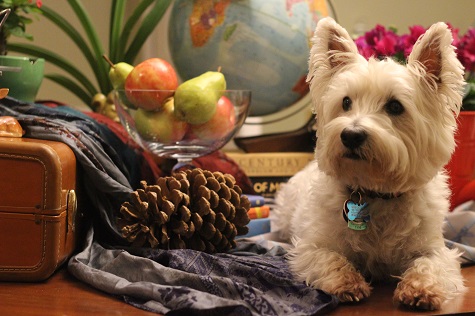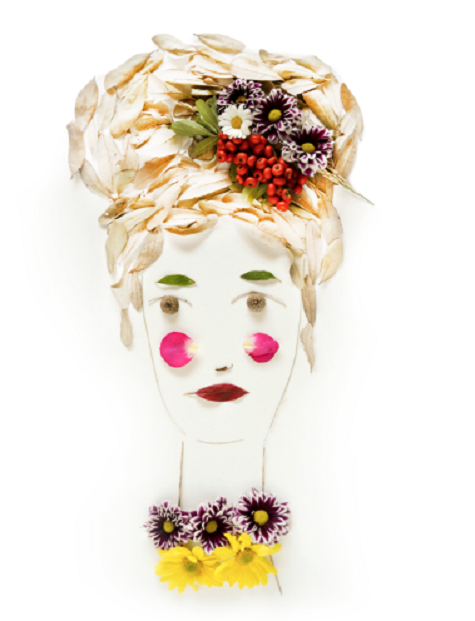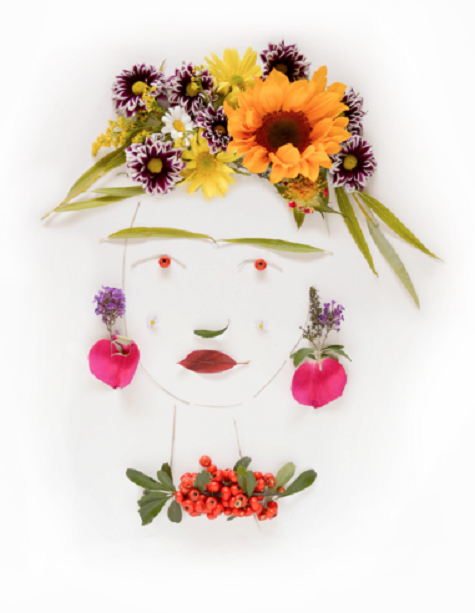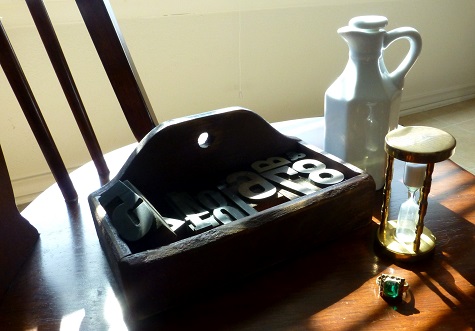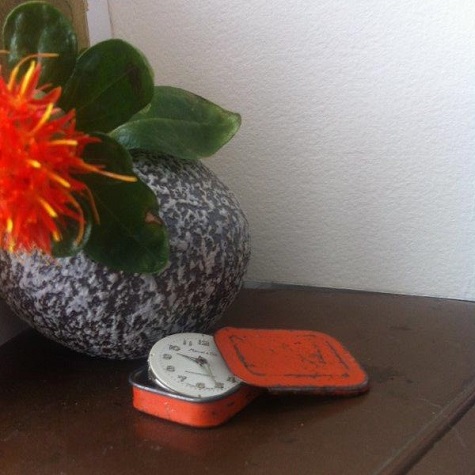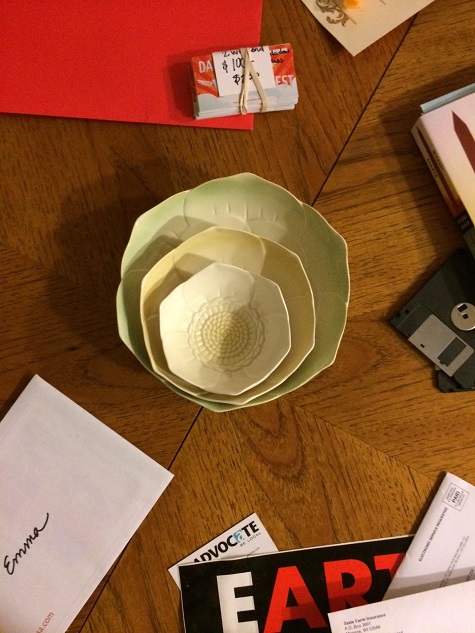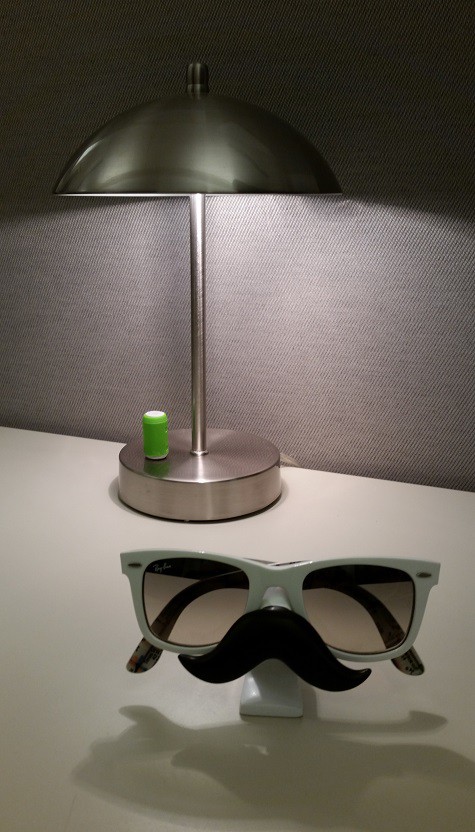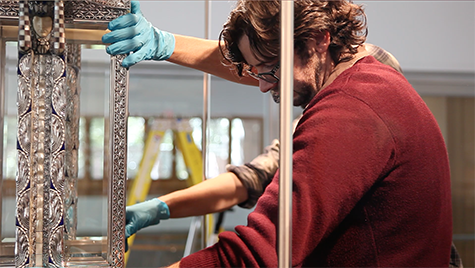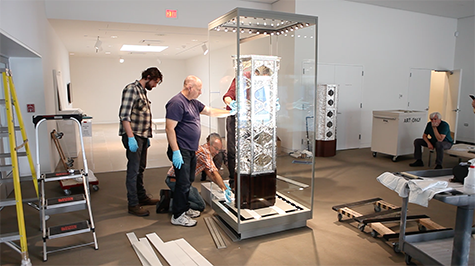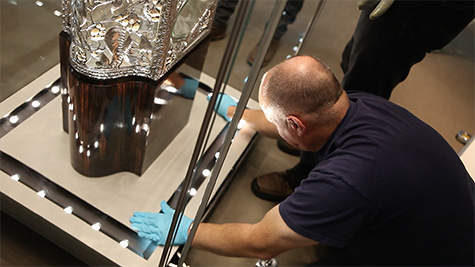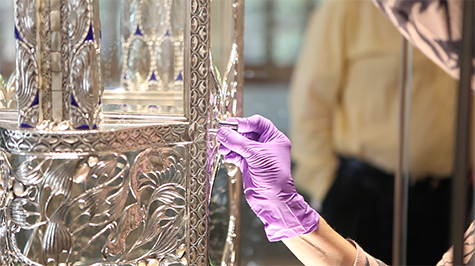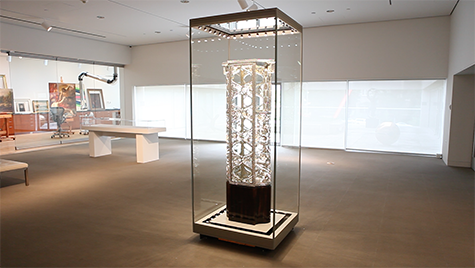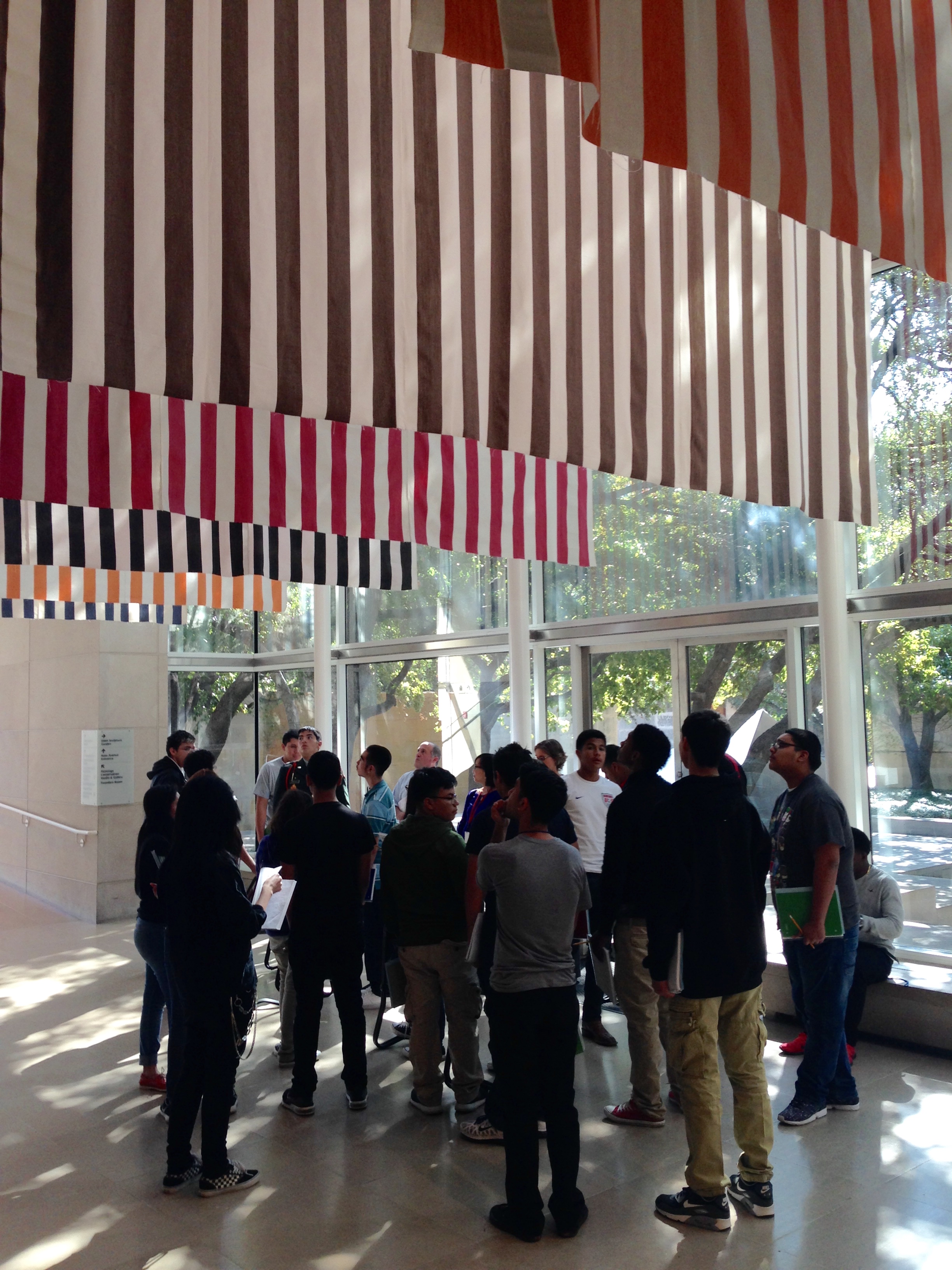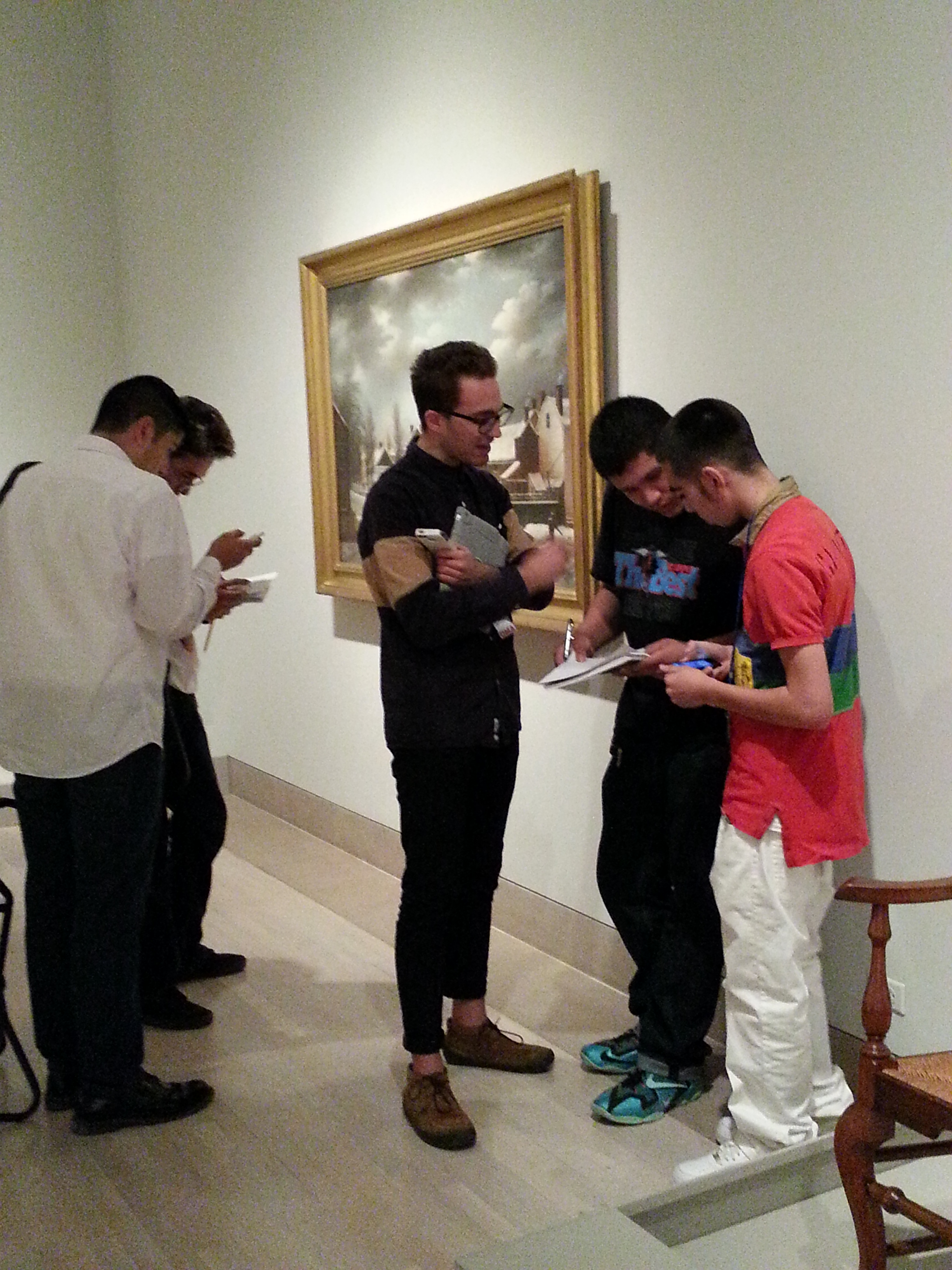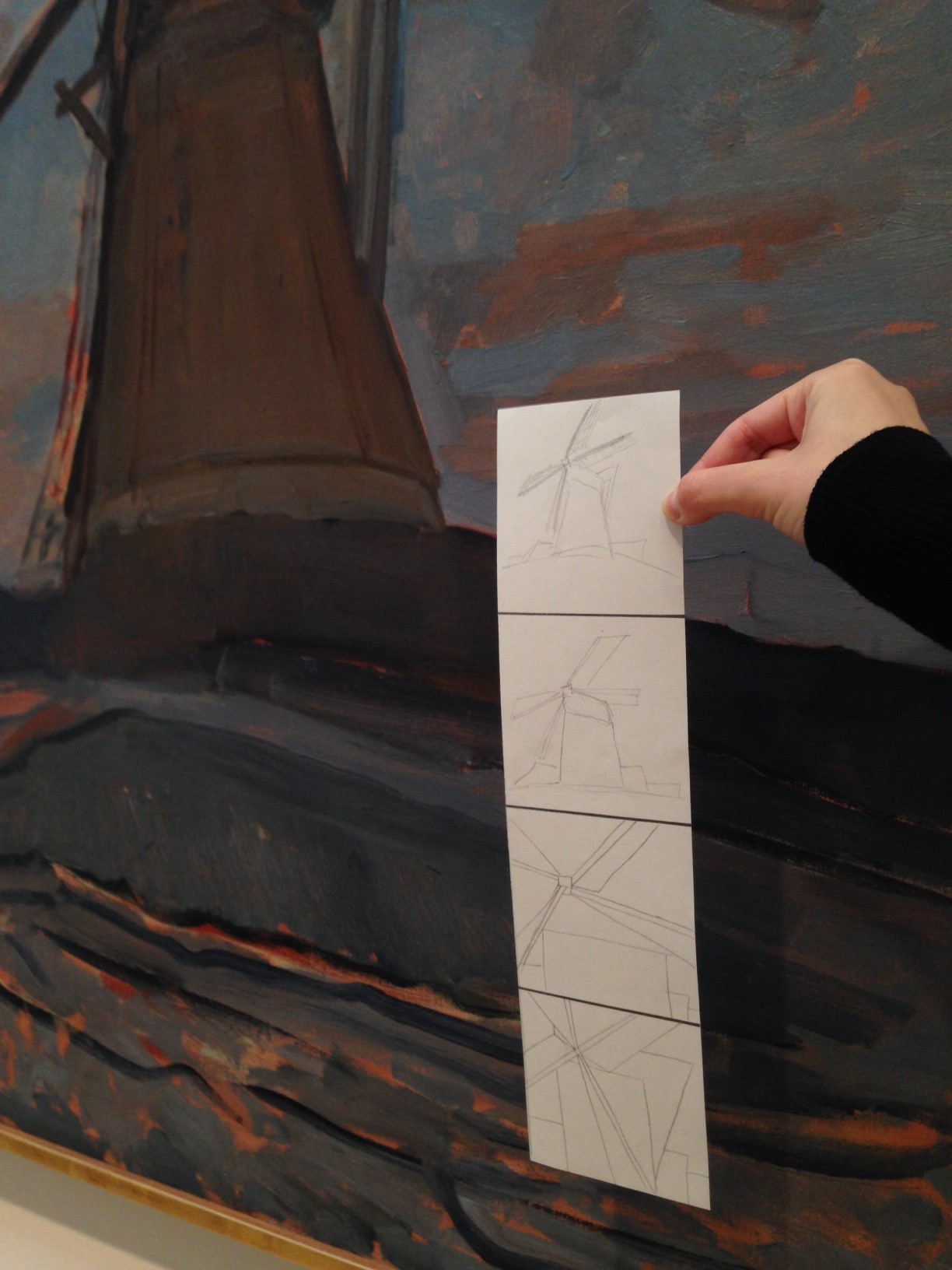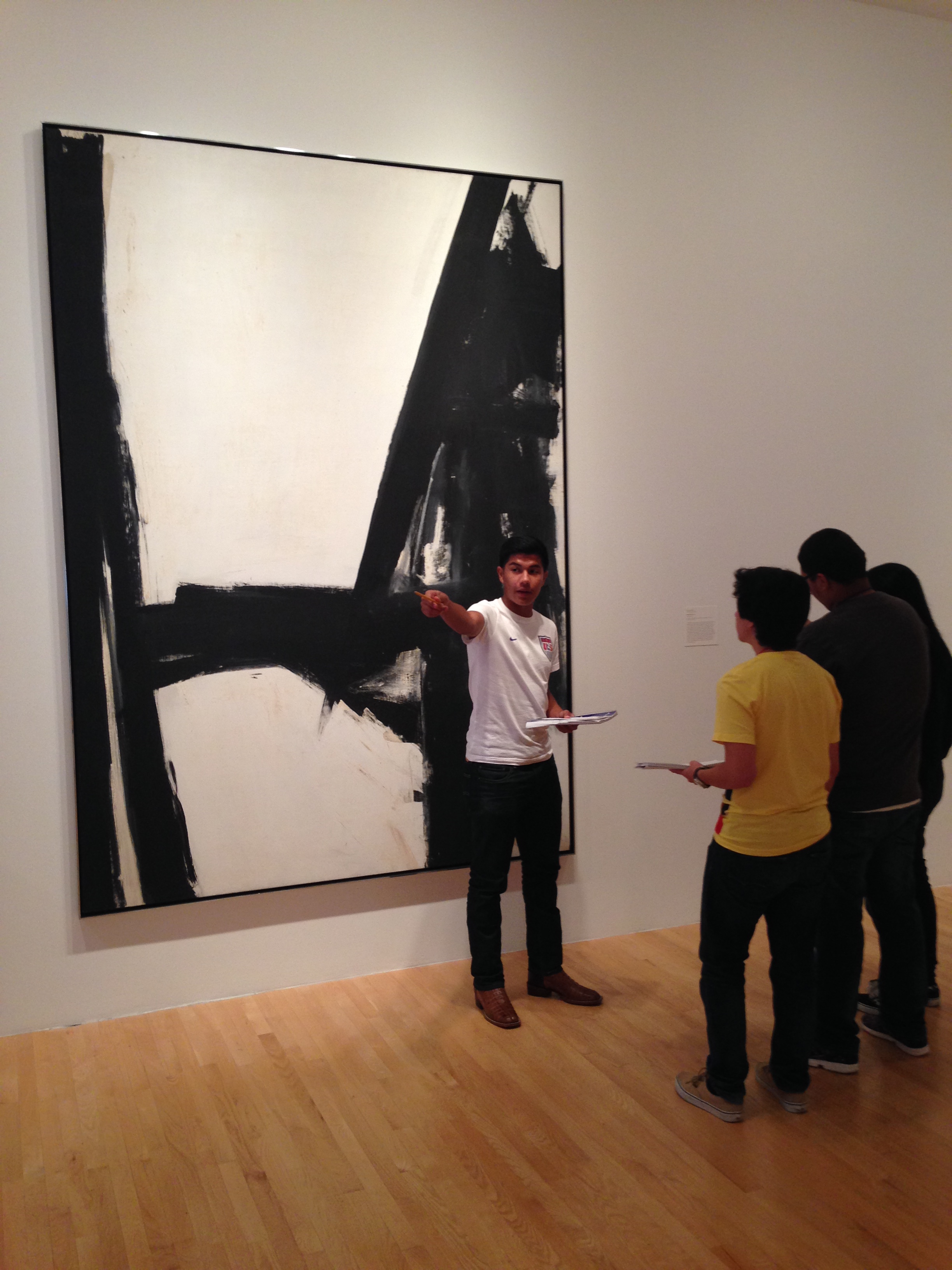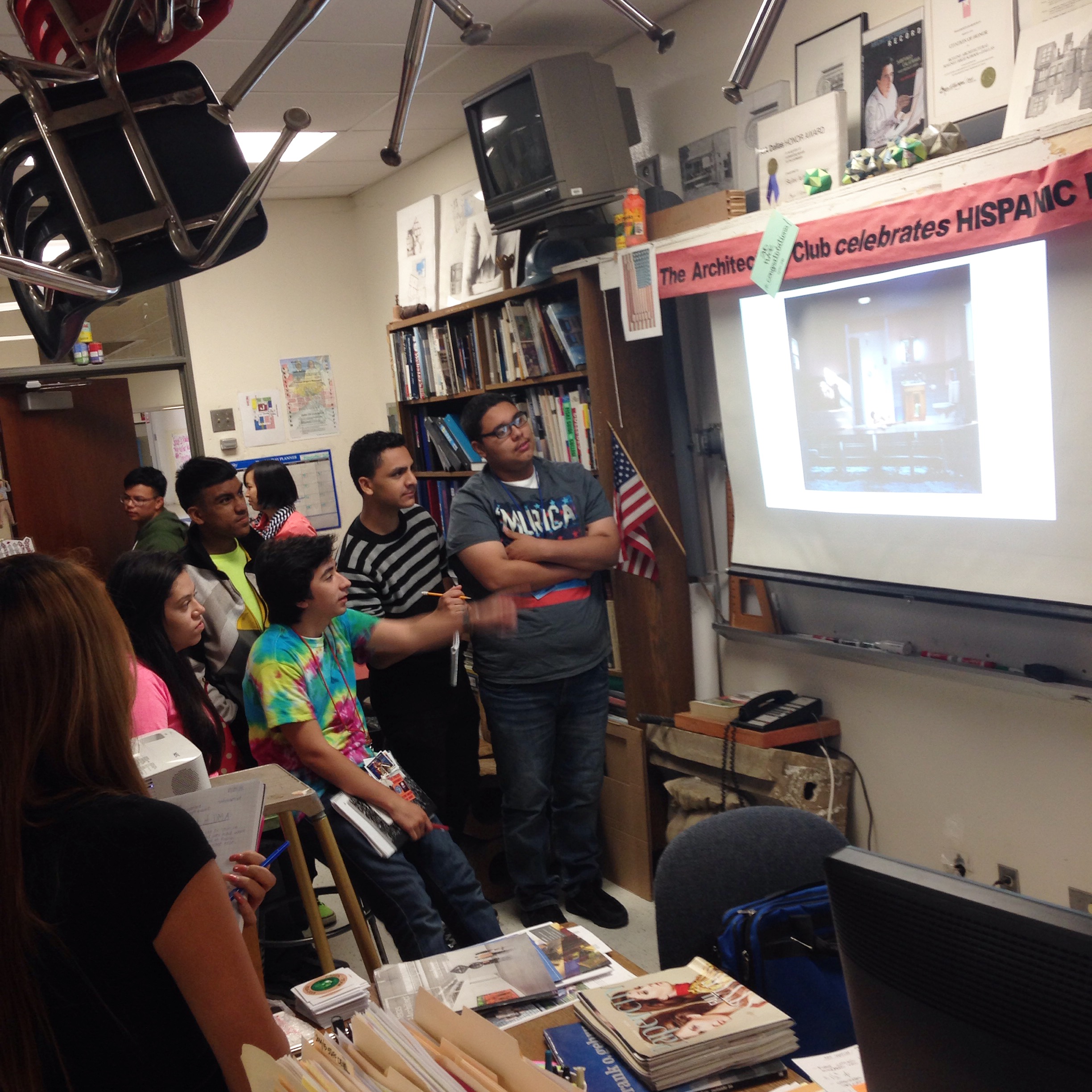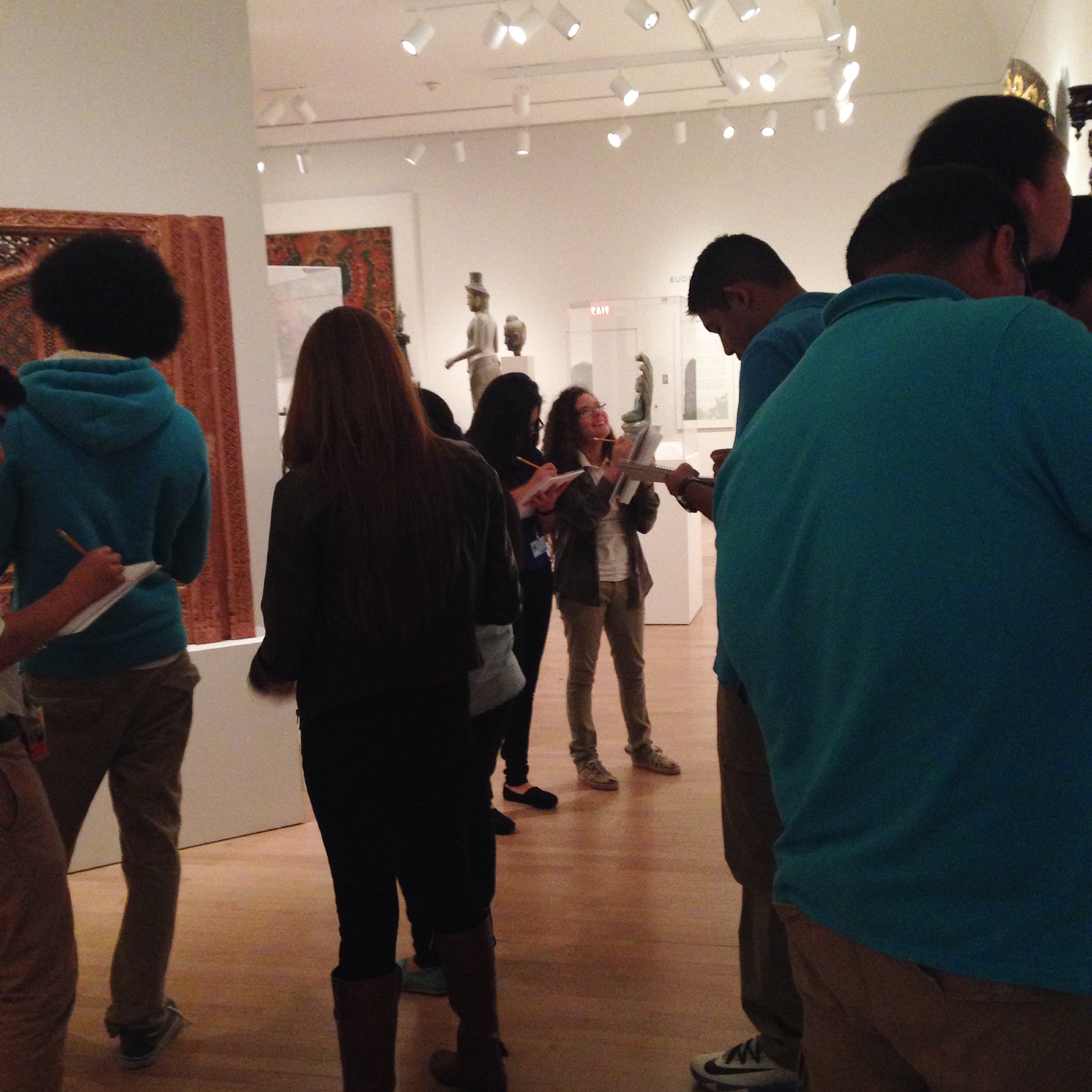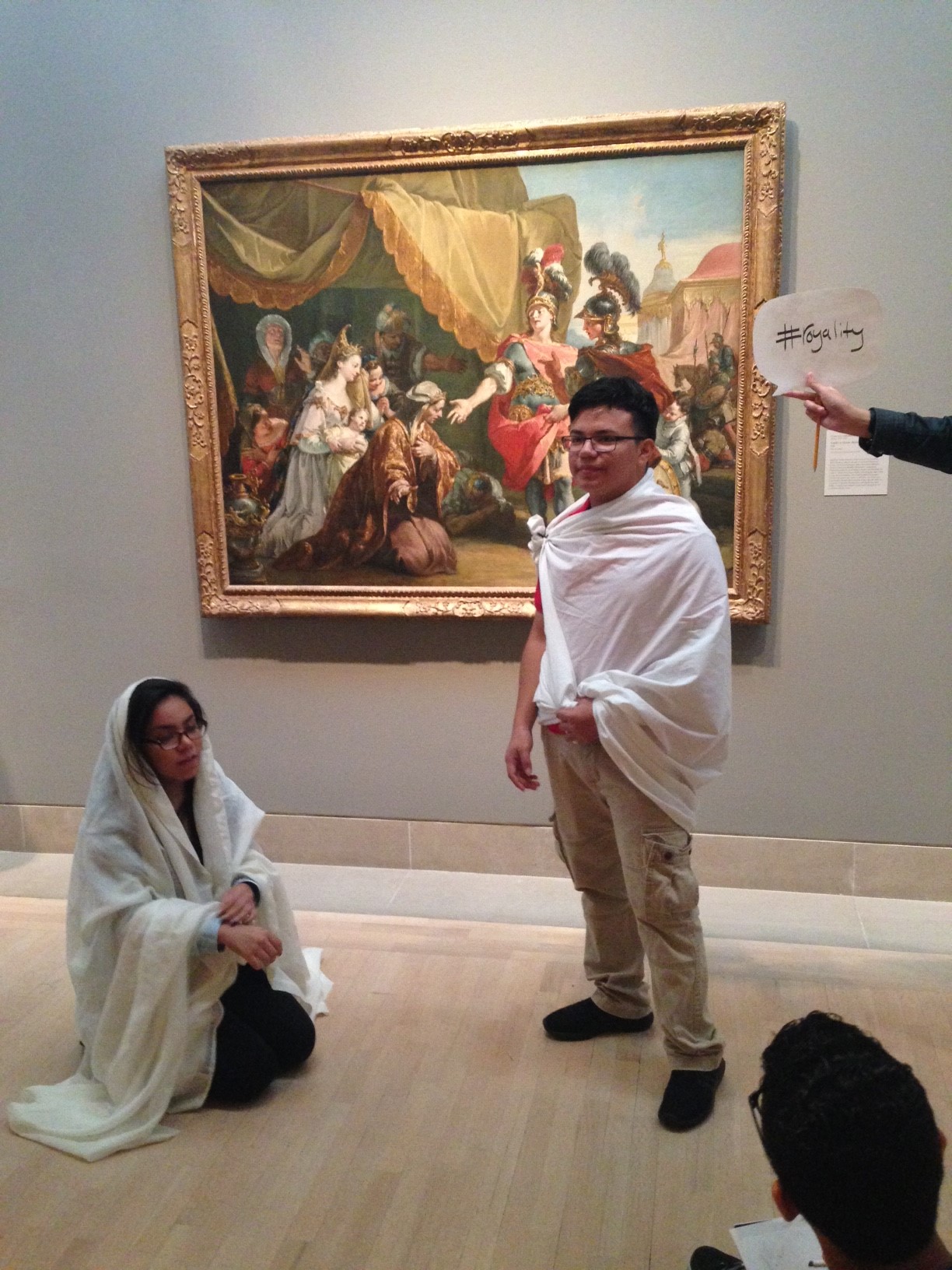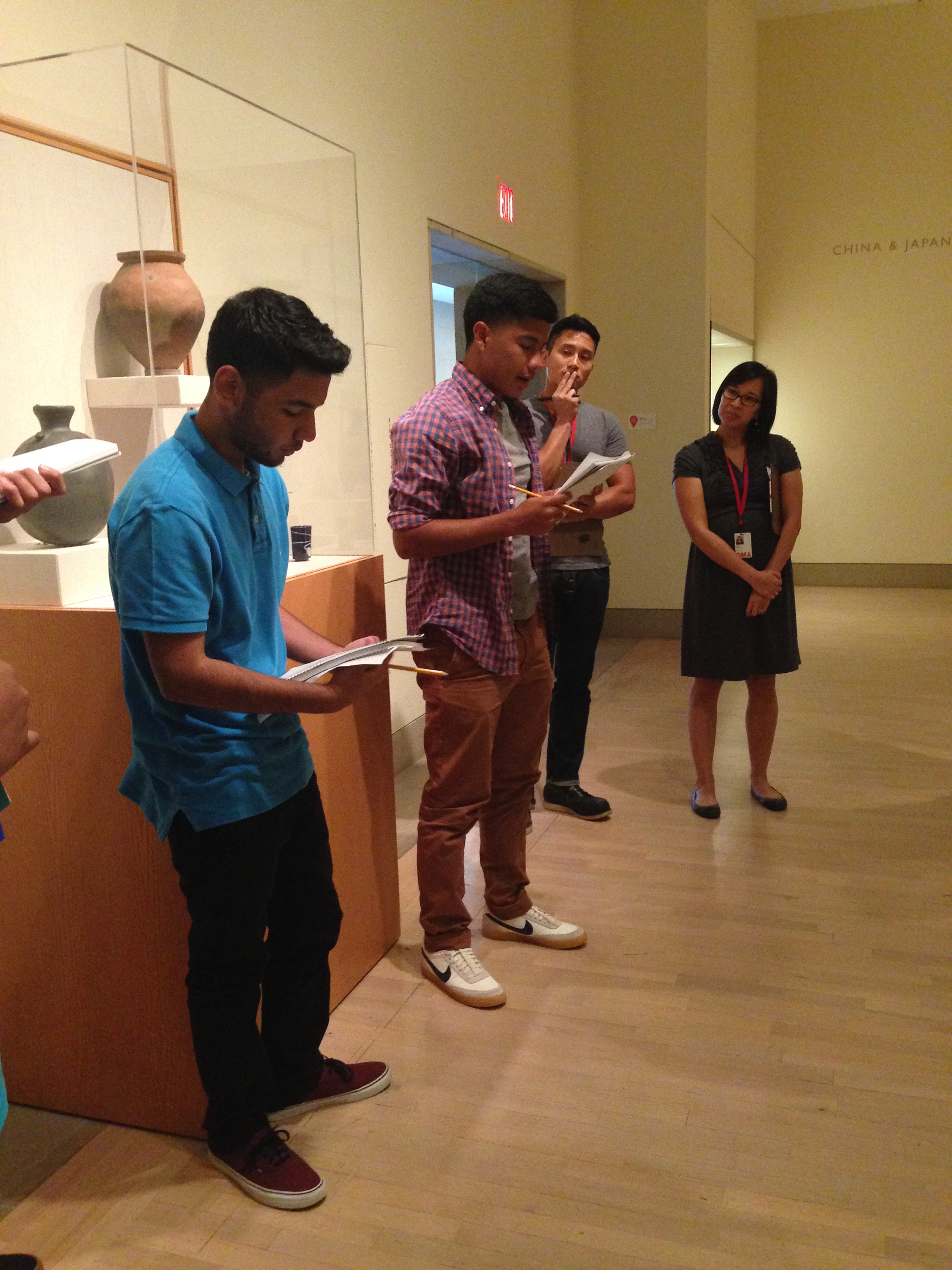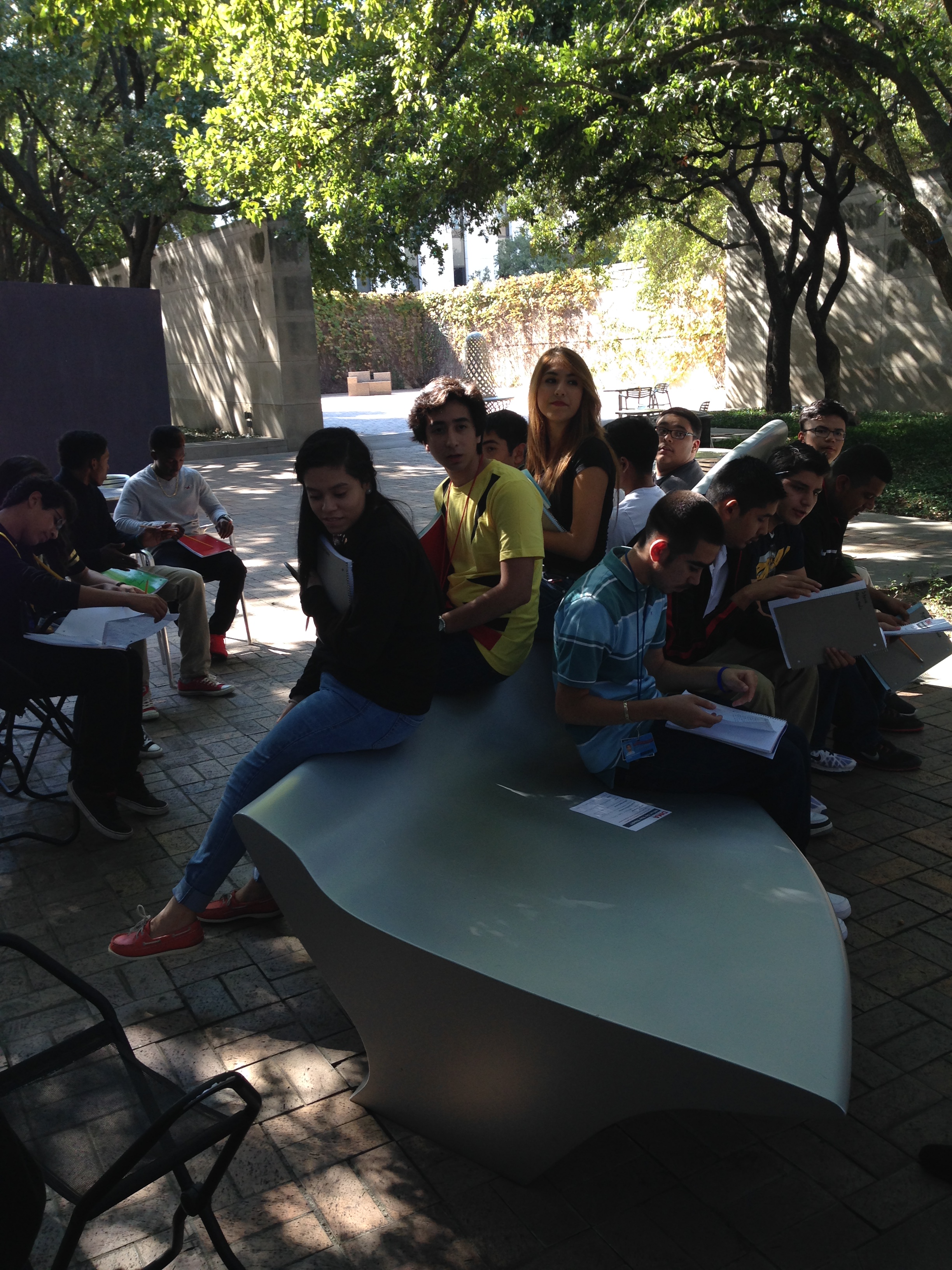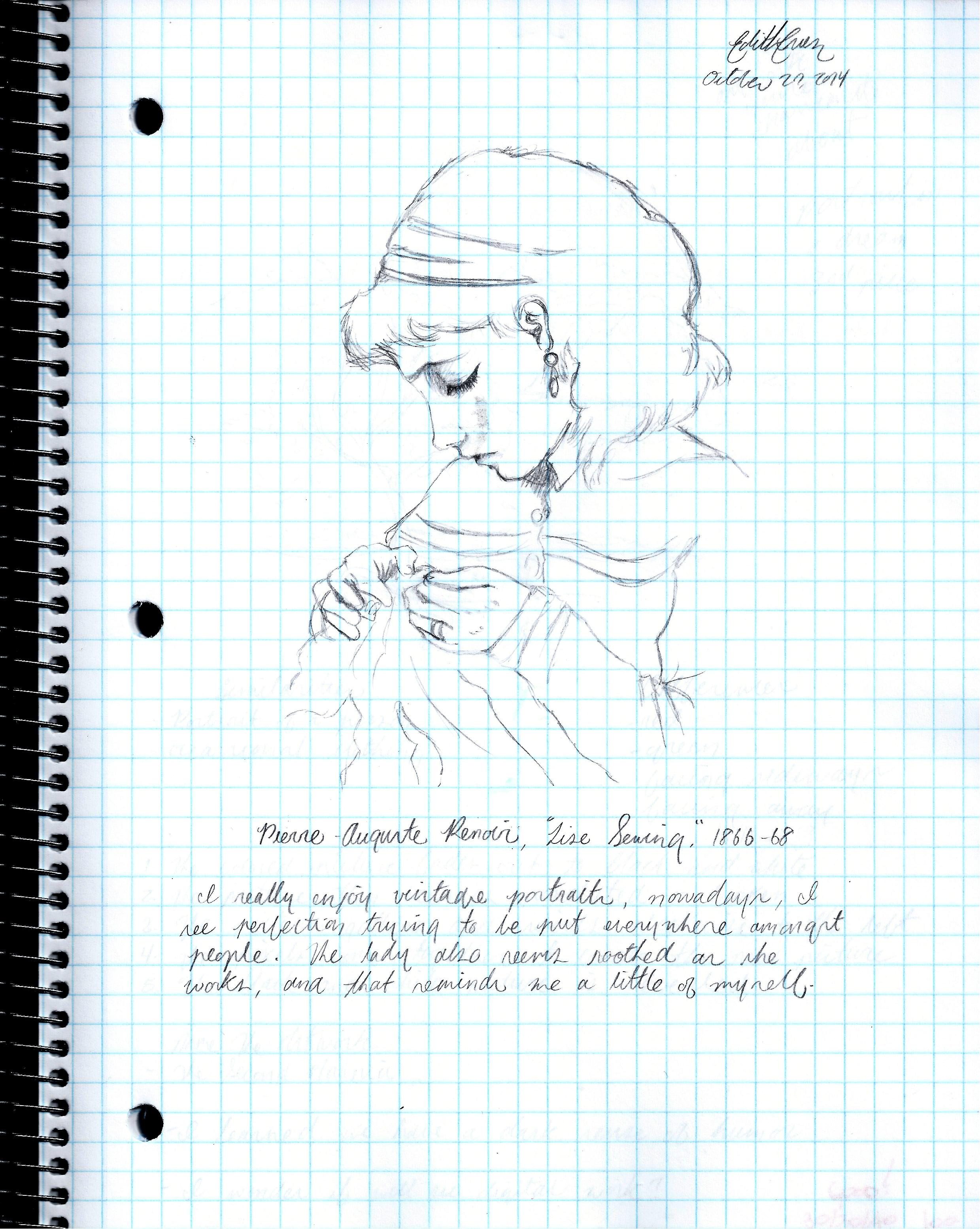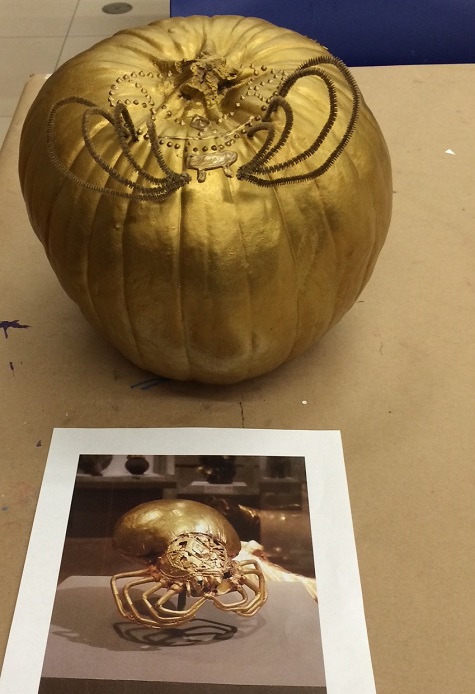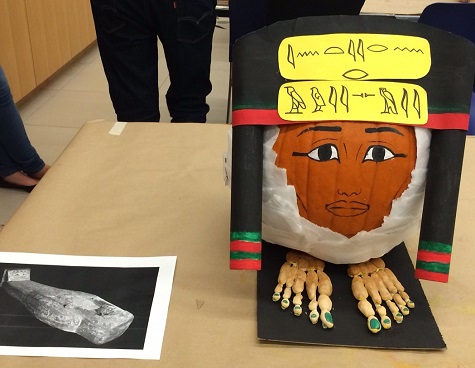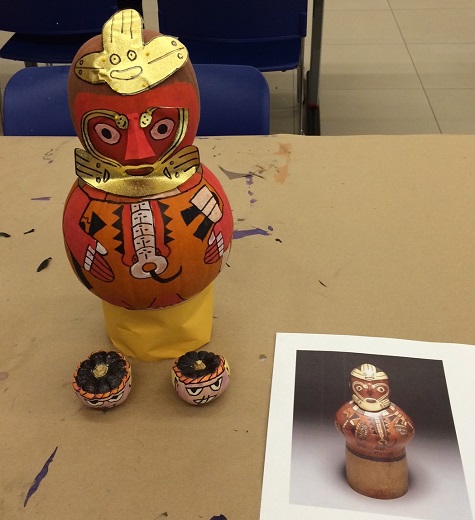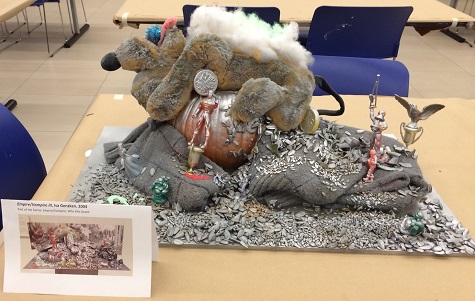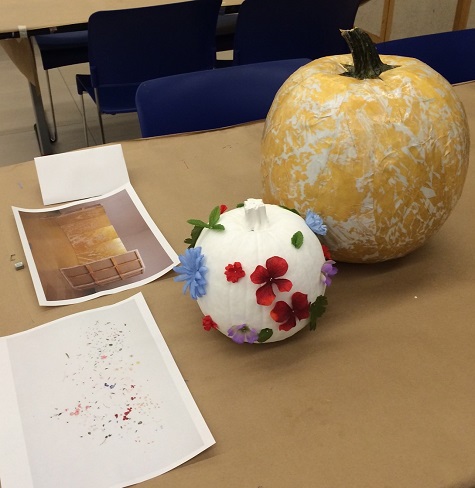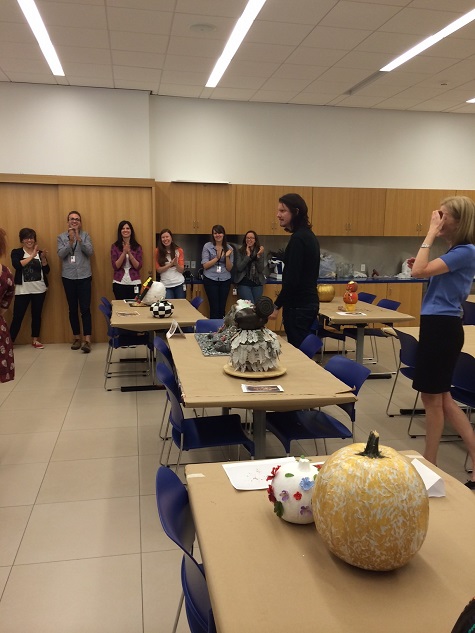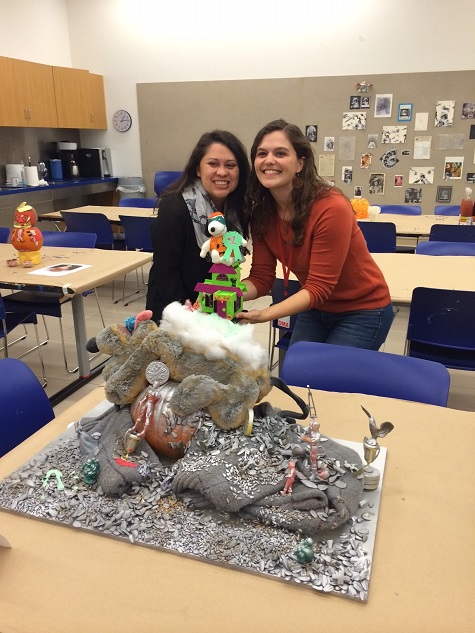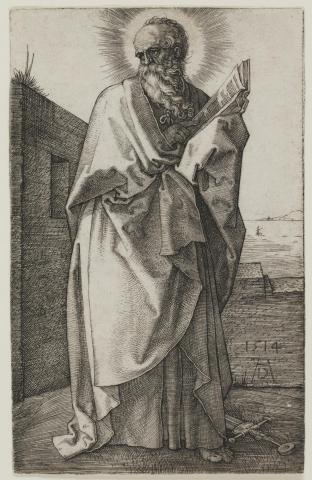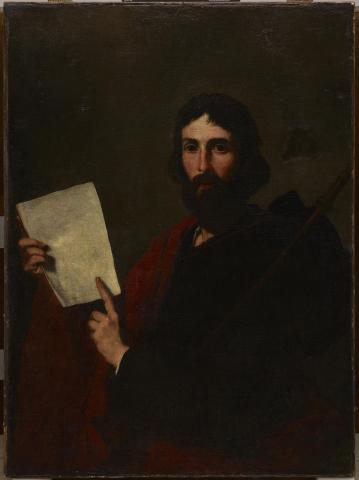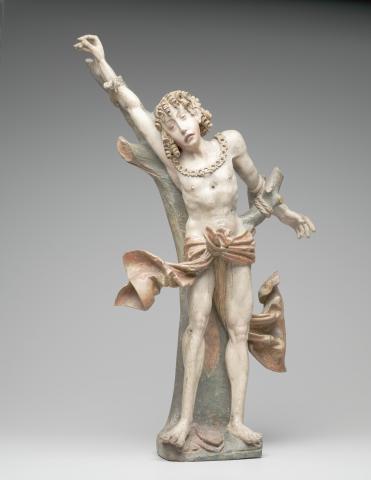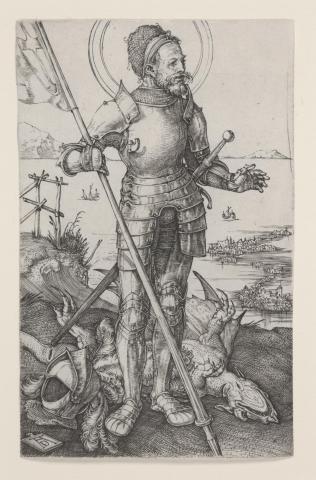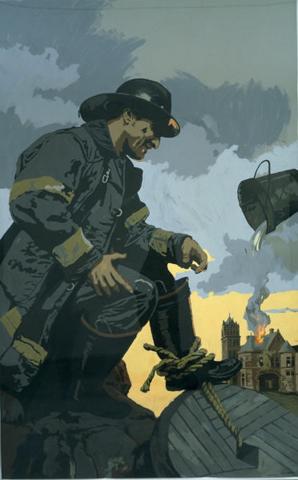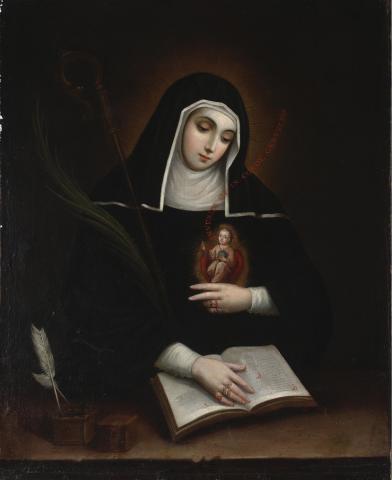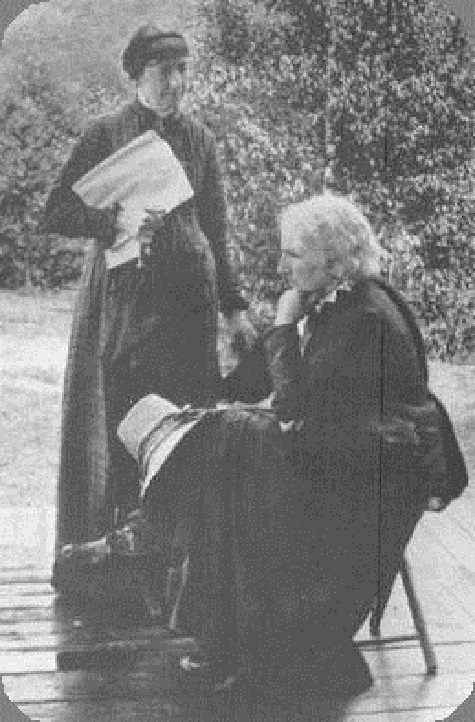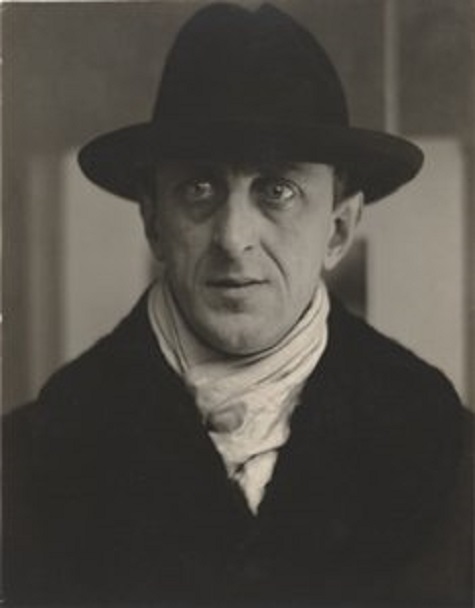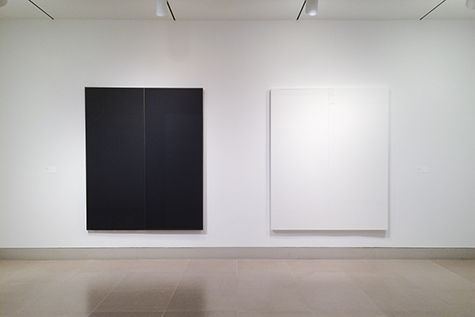Every two years, the DMA staff shows off their artistic skills with a special installation on Level M2. Explore the FREE exhibition Inside Job: Staff Art Show ’14 through February 22, 2015, and hear more about the art in the video below.
Posts Tagged 'Dallas Museum of Art'
An Inside Job
Published November 25, 2014 Staff ClosedTags: Dallas Museum of Art, DMA, museum jobs, Staff Art Show
InstaBouquets
Published November 17, 2014 Exhibitions , Staff ClosedTags: Bouquets: French Still-Life Painting from Chardin to Matisse, collections, Dallas Museum of Art, DMA, still-life
The DMA is positively blooming with floral still-life paintings this winter, thanks to the amazing works on view in Bouquets: French Still-Life Painting from Chardin to Matisse. Visitors can enjoy these paintings and even find a bit of creative inspiration in a sketching gallery, outfitted with a fresh floral arrangement, drawing supplies, and a place to display their drawings.
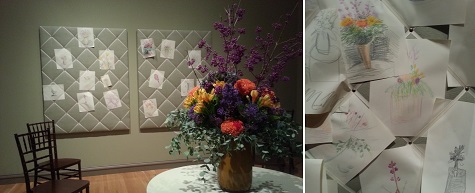
Inspired by the exhibition, DMA staff took a turn curating their own still-life creations. From traditional to offbeat, we hope you enjoy these interpretations of this classic genre that has inspired artists for centuries. If you’re feeling inspired, create your own still life and post it to Twitter or Instagram with the hashtag #BouquetsDMA—you may just see yourself retweeted!
- Reagan Duplisea – “Jimmy the Printer.” (It’s in memory of my grandmother)
- In part, I am inspired by image-cropping choices made by a few artists in the Bouquets exhibition, such as Paul Cezanne, where the flower(s) doesn’t necessarily hold a central position. Gathering a small collection of objects with personal meaning and varied textures also influenced my composition.
- – “End of Day Still Life” – Wednesdays are my busiest days. When I get home, I’m equally satisfied and exhausted. Nothing is going to get put away, everything goes on the table at the end of the day.
Anthea Halsey is the Senior Marketing & Social Media Manager at the DMA.
Installing Opulence
Published November 13, 2014 Behind-the-Scenes , Conservation ClosedTags: Dallas Museum of Art, DMA. conservation, Modern Opulence in Vienna: The Wittgenstein Vitrine, Silver, The Wittgenstein Vitrine
The amazing results of our conservation project (which we discussed here) to restore the DMA’s Wittgenstein Vitrine to its original beauty can now be seen as of this Saturday, November 15, in the DMA’s Conservation Gallery. Modern Opulence in Vienna: The Wittgenstein Vitrine will not only put a major spotlight on this masterwork of 20th-century design but also provide information on the remarkable conservation efforts, additional work by Wittgenstein Vitrine designer Carl Otto Czeschka, his work for the Wiener Werkstätte, and the important patronage of the Wittgenstein family. Check out the installation process below, and if you want to learn more about this one-of-a kind work of art you can attend Saturday’s symposium; event details are online at DMA.org.
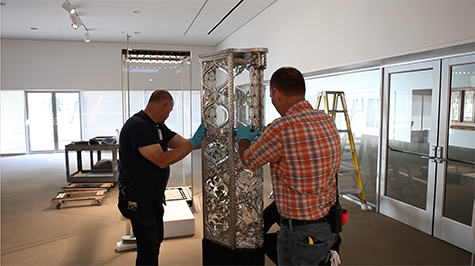
Translating Culture II Collaboration
Published November 10, 2014 Community Connection 4 CommentsTags: Art, C3, Center for Creative Connections, community project, creativity, Dallas Museum of Art, Make Art With Purpose, MAP, Skyline High School
In mid-October, Center for Creative Connections staff embarked on an exciting collaboration with Janeil Engelstad from Make Art with Purpose and a group of students from the Skyline High School Architecture cluster led by teacher Peter Goldstein.
- Students talking about Buren’s ‘Sanction of the Museum’.
- We work closely with the students asking questions and prompting discussion.
- On one of the days, students appropriated one of Mondrian’s paintings by focusing on the windmill and responding with a four step drawing, from figurative to abstract.
- Jonathan responding to Gerhard Richter’s ‘Abstract Painting’ in the exhibit ‘Museum is History’ in the Hoffman Gallery.
Skyline students have been visiting the DMA on a weekly basis to become acquainted with our collection. During the visits, the students explore the ways in which art can have cultural and personal significance by responding both critically and creatively through activities, dialogue, and reflection.
Starting on Level 4 with American Art and moving all the way to Level 1 with our Contemporary collection, the students have been talking, writing, and drawing works of art that they want to include on their own tour, which will be used to create a new smARTphone tour of the Museum. We also make weekly visits to their high school to further explore the collection and discuss the types of responses that will become content for stops on their tour.
- Group of students in the Hoffman Gallery discussing Contemporary Art.
- At Skyline, talking Gregory Crewdson and highlights from our Contemporary Art collection at DMA.
- Students sketching on Level 3.
- Miguel sharing his narrative response to Leonora Carrington’s surrealist painting on Level 4.
The project is part of Translating Culture, an initiative that launched last year that aims to create links with the community by inviting groups to collaborate with staff through a series of workshops to inspire dialogue for mutual understanding and varied perspectives on the collection. While intending to inspire the use of art as a means of further understanding oneself and the world we live in, Translating Culture II also hopes to give the students a sense of ownership of the Museum and a platform from which to speak out their thoughts and concerns in order to engage their peers and the wider community.
- We definitely make sure to have fun in the galleries! – While visiting the European Galleries, we asked students to dress up and create a tableau inspired by a work of art.
- Abel and Guillermo sharing their response to a piece from the Japanese collection.
- Students experiencing and talking about Zaha Hadid’s bench outside in the DMA Sculpture Garden.
We will continue to meet with the students until the end of November, at which point all the student work will be collected and prototyped into their bilingual smARTphone tour in early 2015. Stay posted for more detailed information on the project and a behind-the-scenes peek at students’ work, such as those below which include a sketch by student Miguel Martinez based on The Icebergs by Frederic Edwin Church, a drawing by Edith Cruz inspired by Renoir’s Lise Sewing and a set of sketches by Guadalupe Murillo during her visit to The Silk Road exhibit on Level 3.
- Drawings by Guadalupe Murillo during her visit to Level 3.
- Drawing by Edith Cruz inspired by Renoir’s Lise Sewing.
- Sketch by student Miguel Martinez based on The Icebergs by Frederic Edwin Church.
Eliel Jones
McDermott Intern for Visitor Engagement
Gourds Gone Wild
Published October 31, 2014 Collections , Staff ClosedTags: Dallas Museum of Art, DMA, Halloween, Isa Genzken, Pumpkin
The always creative DMA Education Department celebrated Halloween with a Museum-inspired pumpkin decorating contest. Staff members paired off and created a patch of pumpkins disguised like works in the DMA’s collection and special exhibitions. The pumpkins were judged by a team from the Exhibitions and Curatorial departments. An Isa Genzken re-creation took home the coveted Great Pumpkin Prize. We hope everyone has a safe and happy Halloween!
Friday Photos: All Saints’ Day
Published October 31, 2014 Friday Photos ClosedTags: All Saints' Day, Art, Dallas Museum of Art, Halloween, saints, works of art
This time of year, it feels as if the city is overflowing with costumes, jack-o-lantern’s and trick-or-treaters! But in all the festivity, many of us tend to forget the origin of the holiday. Halloween, also known as All Hallows’ (Saints’) Eve, was historically a day for Christian worshipers to pray and prepare themselves for November 1, All Saints’ Day, a feast day dedicated to all the saints and martyrs of Christianity.
The DMA has a large number of artworks that depict saints, ranging in time period and media. I would like to take this occasion to highlight some of my favorites, from St. George slaying a dragon to St. Florian, the patron saint of firefighters.
- Albrecht Dürer, St. Paul, 1514, Dallas Museum of Art, Junior League Print Fund
- Jusepe De Ribera, Saint James the Greater, 17th century, Dallas Museum of Art, The Karl and Esther Hoblitzelle Collection, gift of the Hoblitzelle Foundation.
- Danube School, St. Sebastian, c. 1520, Dallas Museum of Art, Munger Fund
- Albrecht Dürer, St. George on Foot, 1504-05, Dallas Museum of Art, bequest of Calvin J. Holmes
- Matthew Benedict, Saint Florian, 1997-98, Dallas Museum of Art, Mary Margaret Munson Wilcox Fund.
- Miguel Cabrera, Saint Gertrude (Santa Gertrudis), 1763, Dallas Museum of Art, gift of Laura and Daniel D. Boeckman in honor of Dr. William Rudolph
For more information on any of these saints or works of art, check out the DMA Collections webpage! And from all of us here at the DMA, enjoy your All Saints’ Eve and Day!
Liz Bola
McDermott Graduate Intern for Gallery and Community Teaching
Pride in the DMA: Celebrating LGBTQ Artists in the Collection
Published October 29, 2014 Collections 10 CommentsTags: Anne Whitney, Berenice Abbot, Catherine Opie, Charles Demuth, Dallas Museum of Art, David Hockney, DMA, Jasper Johns, LGBTQ History Month, Marsden Hartley, Robert Mapplethorpe
In honor of LGBTQ (Lesbian, Gay, Bisexual, Transgender, Queer) History Month, I’ve researched some of the LGBTQ artists whose work can be found in the DMA’s collection to bring to light a piece of their lives that isn’t commonly referenced.
First, a quick side note: There is a lot of debate concerning how to historically categorize people who did not classify themselves as part of the LGBTQ community, either because they were living in a society that didn’t accept their identity or because the words simply did not exist. Below I’ll be including artists who had same-sex relationships, who identified as gay, bisexual, etc., or whose actions in today’s world would categorize them as LGBTQ.
Anne Whitney (1821–1915)
Born in 1821, Whitney fought to become an artist in a society that did not readily accept female sculptors; it was considered masculine, as opposed to more “feminine” artistic mediums like watercolor or drawing. She was also an avid abolitionist and advocate of gender equality.
Whitney’s relationship with Abby Adeline Manning, which lasted for over forty years, is frequently termed a “Boston Marriage.” These were characterized by two women—often with their own careers—living together and supporting themselves financially. Manning and Whitney were so close that they were buried next to one another under the same headstone.
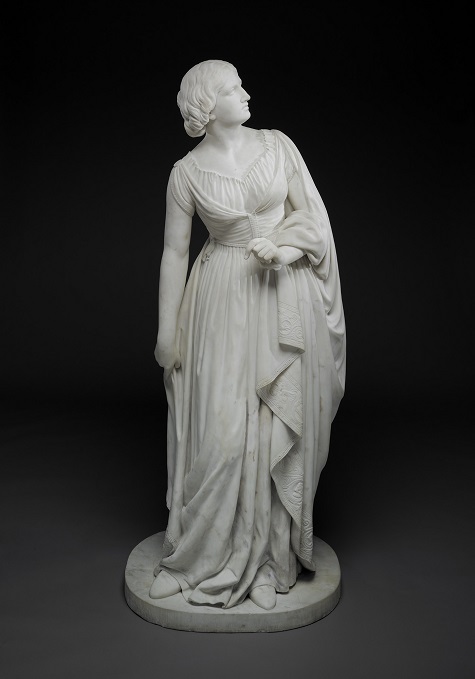
Anne Whitney, Lady Godiva, c. 1861-1864, marble, Dallas Museum of Art, gift of Dr. Alessandra Comini in memory of Dr. Eleanor Tufts, who discovered the Massachusetts-backyard whereabouts of this long-forgotten statue and brought it to Dallas
Whitney’s sculpture of Lady Godiva depicts the moment when she is about to remove her clothing before her famous ride through the streets. It was gifted to the DMA by Dr. Alessandra Comini in memory of Dr. Eleanor Tufts, who discovered the forgotten statue in a backyard in Massachusetts.
Marsden Hartley (1877–1943)
Hartley’s life was marred by periodic tragedies that informed much of his work. Losses included his siblings, mother, and numerous close family friends. Primarily a painter, Hartley spent much of his career wavering on the brink of financial insecurity.
During Hartley’s first trip to Europe in 1912, he was introduced to Karl von Freyburg, his cousin and rumored lover. After von Freyburg, a German soldier, was killed during battle in WWI, Hartley sank into a depression that would spur his work featuring German officers.
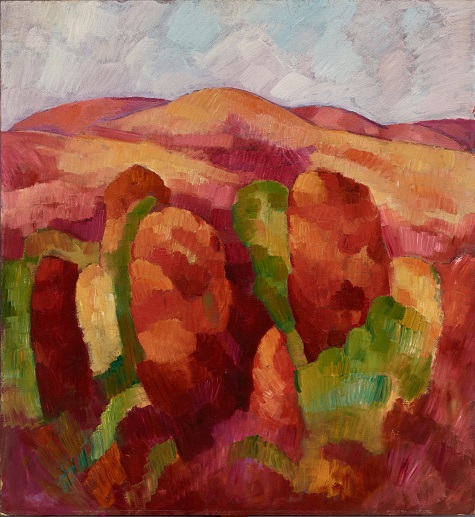
Marsden Hartley, Mountains, no. 19, 1930, oil on board, Dallas Museum of Art, The Eugene and Margaret McDermott Art Fund, Inc.
Mountains, no. 19 hangs in the DMA’s American Art Gallery. Its Cézanne-influenced shapes are coupled with the rich colors of an autumn day in New England.
Berenice Abbott (1898–1991)
Born in Springfield, Ohio, in 1898, Abbott traveled the world throughout her artistic career. She is most noted for her portraits of LGBTQ community members in 1920s Paris and photographs of 1930s-1960s New York. Abbott was very open about her lesbian love affairs in her early years, and was, at one time, involved with silverpoint artist Thelma Wood; however, given the increasingly conservative culture of America following the Great Depression, Abbott kept her love life a secret in her later years.
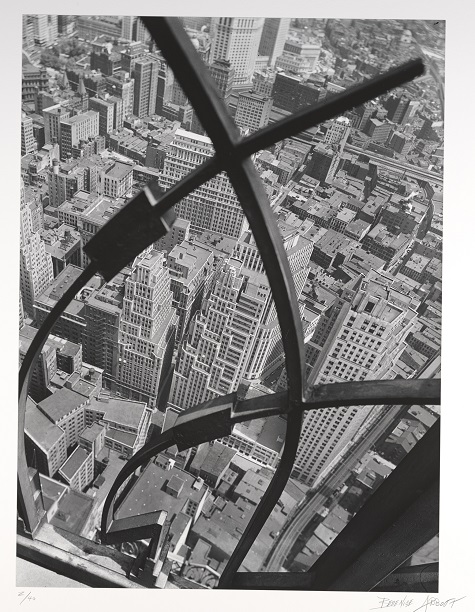
Berenice Abbott, City Arabesque, 1938, print 1983, gelatin silver print, Dallas Museum of Art, Foundation for the Arts Collection, gift of Morton and Marlene Meyerson, © date Estate of Berenice Abbott
The DMA is fortunate to have a large number of Abbott’s photographic prints, most of them detailing her work in urban architecture. This picture is notable for the curved lines juxtaposed against the rigid, harsh structures of the cityscape.
Other artists in the DMA’s collection who are also members of the LGBTQ community include:
Jasper Johns
Charles Demuth (who was a friend of Marsden Hartley)
David Hockney
Robert Mapplethorpe
Catherine Opie
While we know the month is nearing an end, you can celebrate these artists and more throughout the year in the DMA galleries.
Taylor Jeromos is the McDermott Education Intern for Adult Programming and Arts & Letters Live at the DMA.
Dead Art Walking
Published October 27, 2014 Collections , Education ClosedTags: Dallas Museum of Art, DMA, Halloween, teen art, Teresa Rafidi, zombies
Visitors to the Museum this Friday will have the chance to experience not only fantastic works of art but a Halloween performance treat as well. For the second year in a row, our gallery attendants will be in costume to greet visitors in all their glittery, and sometimes grisly, glory. This will mark the second time in the past few months that monsters have stalked the hallways.

In August, the DMA hosted a week-long zombie camp for teens. This STEAM-based camp not only connected students with artists, scientists, and film industry professionals but also sneakily cultivated 21st-century skills such as design thinking, collaboration, and creative problem solving. Click here to read more about the program and enjoy these great images taken by photographer Teresa Rafidi!
For more information on upcoming teen programs like our T-shirt design contest and monthly workshops, visit the DMA website .
Juan Bigornia is the C3 Program Coordinator at the DMA.
Sweet Sixteen
Published October 22, 2014 Dallas , DFW 1 CommentTags: amfAR, Dallas Museum of Art, DMA, The Museum is History, TWO x TWO for AIDS and Art, Wade Guyton
The year 2014 marks the 16th annual TWO x TWO for AIDS and Art Gala and Auction, which benefits amfAR and the DMA. To date, the yearly event has raised over $45 million dollars to support amfAR’s AIDS research efforts and the DMA’s contemporary art acquisitions fund. And each year the benefit honors an artist. TWO x TWO’s 2014 honoree is American artist Wade Guyton, who, although only in his early forties, is already recognized as one of the most influential artists of his generation. Discover Guyton’s work at the DMA in the exhibition The Museum Is History for free.
Lost in Space
Published October 20, 2014 Exhibitions ClosedTags: Dallas Museum of Art, DMA, Isa Genzken, Isa Genzken: Retrospective
Isa Genzken: Retrospective, currently on view in the DMA’s Barrel Vault, arrived in Dallas after presentations in New York and Chicago, and came together after weeks of installation. Each work of art required a different approach and took varying amounts of time to place on display. Below, watch the installation process of Genzken’s 2007 work Oil XI, which invites you into the exhibition. Visit it now for free through January 4, 2015.
